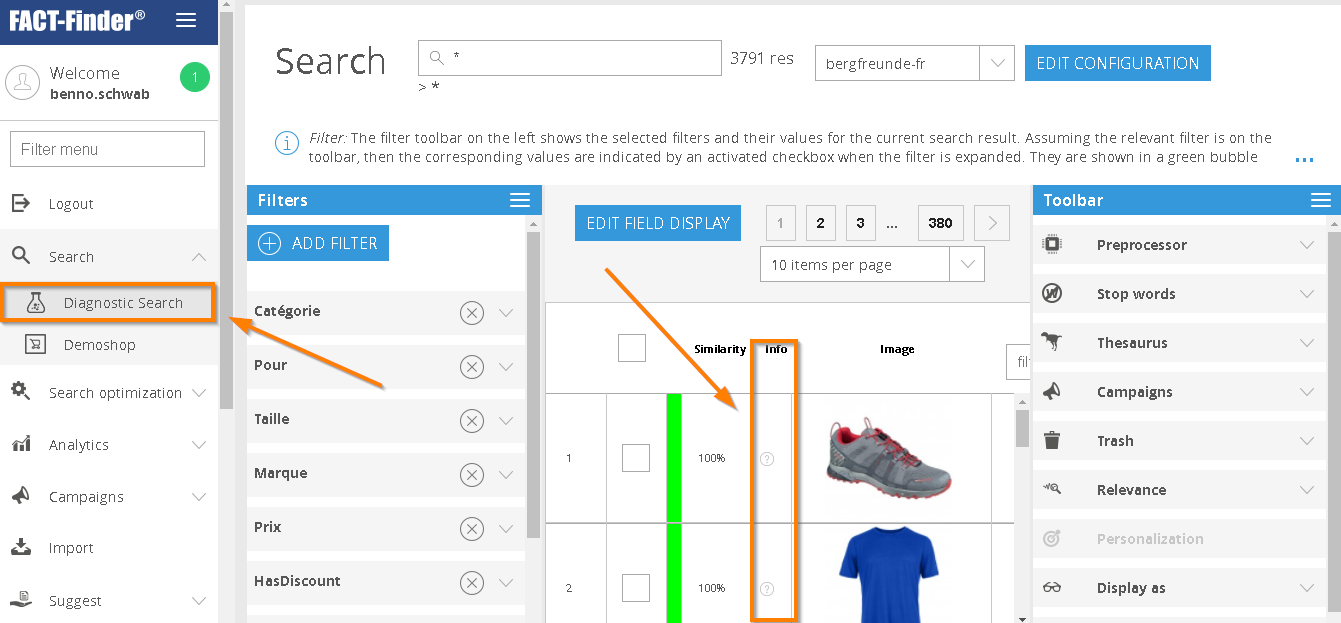Finding Opportunities for Optimization
There are various methods for determining the points at which you can and should optimise the search results. These differ according to the time of optimisation and available options.
Detailed information for the located products is displayed by mouse click via the diagnostic search. This information should allow you to pin down what influences the sequence of your product list. For testing purposes, you can also influence this sequence based on different criteria. In FACT-Finder 7.2, you can find the details section by clicking on the small question mark symbol in the Info column.
Here you can access all information relevant for the search result. Based on this, you can plan specific optimisations.
Initial Optimisation
The initial optimisation occurs when the FACT-Finder Search Engine is configured for the first time, ensuring that the general sequence of results matches your expectations. Key aspects of this are configuring the field weightings, and applying record weightings to reflect specific product and business rules (Ranking).
If you have a list of frequent search terms, we recommend that you base your optimisation on the top 100 terms. Search for these terms one at a time and check that the sequence in which products are returned matches your business rules. If this is not the case, plan your rules accordingly. If the desired products are not returned at all, then creating a Thesaurus or Preprocessor entry will generally ensure that the correct results are achieved.
Subsequent optimisation
If you have been using FACT-Finder for a certain amount of time, you will already have gathered sufficient additional information that can be used for optimising the search results. The first area for consideration is the What's Hot analysis, the report of which you can also receive on a regular basis. There you will find a selection of significant search terms for the prior week or day. Aside from the trend diagrams, especially those terms for which no products or only “bad” hits are returned are relevant to you. “Bad” in this respect relates to the similarity between the search term and the results (relevancy below 100% minus the spread).
Deeper insights into the search requests are possible with the word list of the logfile analysis. Use the integrated tracking interface to access performance indicators (for example, Click-Through-Ratio, sold article value etc.) for the specific search terms. Based on these, you can sort and limit the word list, concentrating on the terms with potential for optimisation.
In most situations, the results can be adjusted by creating Thesaurus entries and Preprocessor entries.

